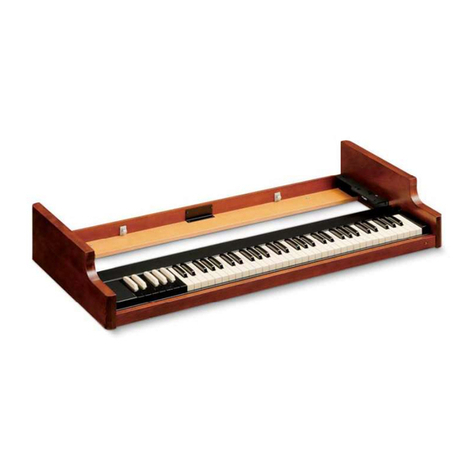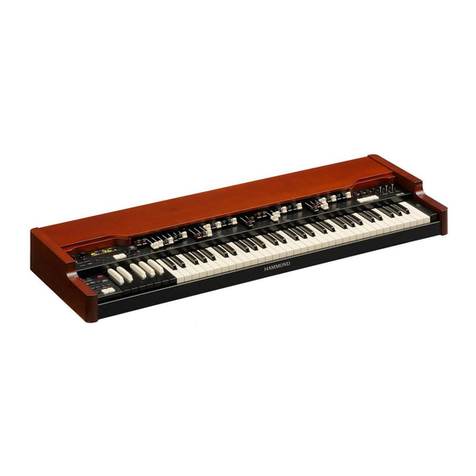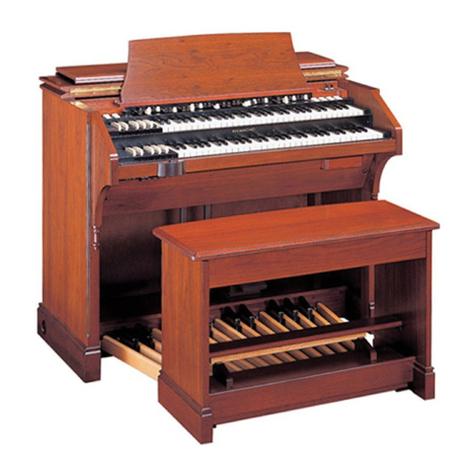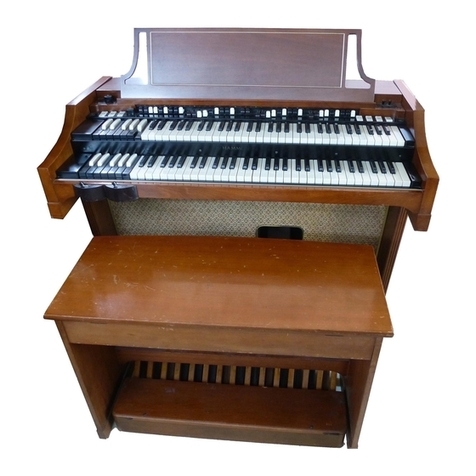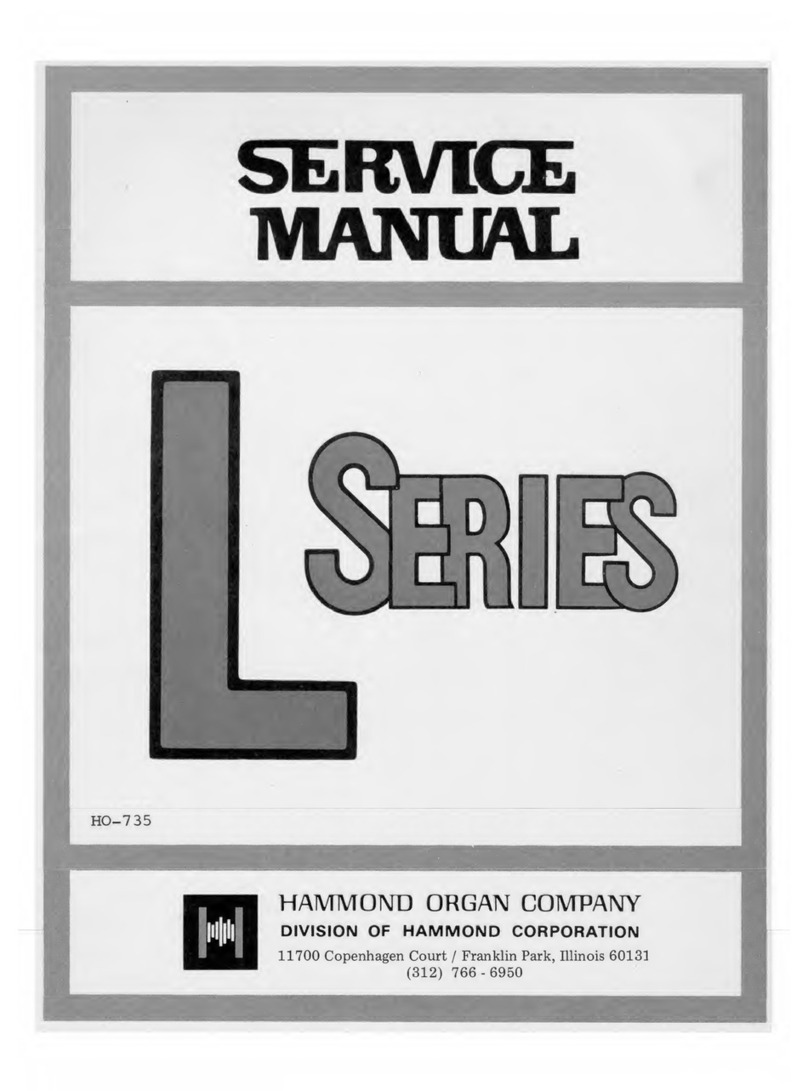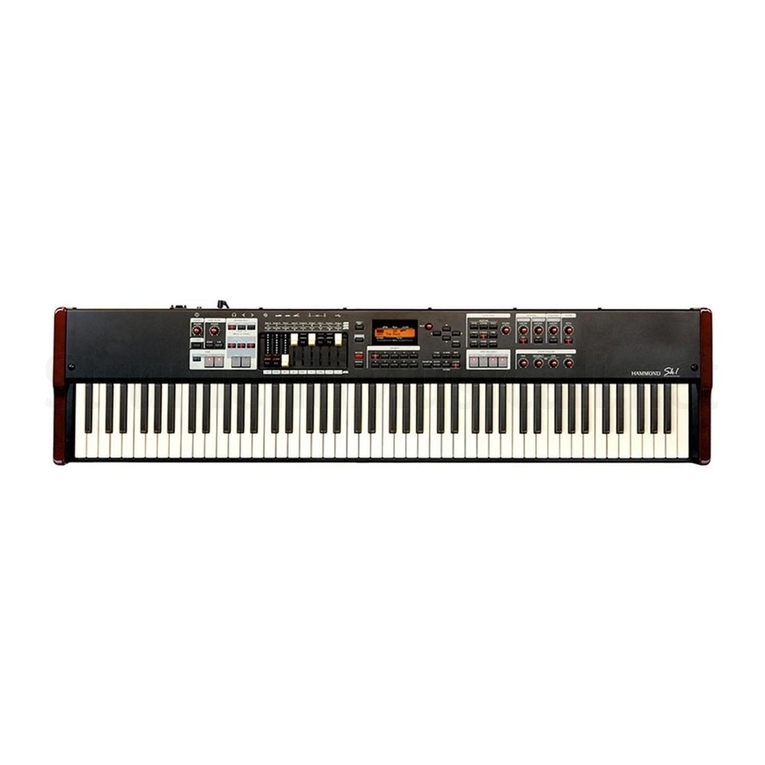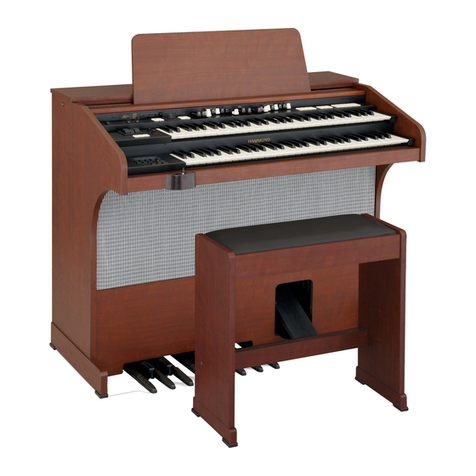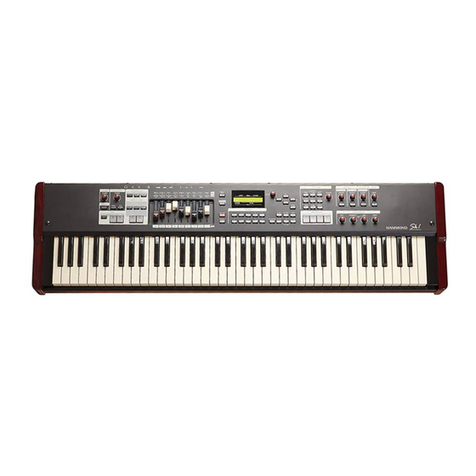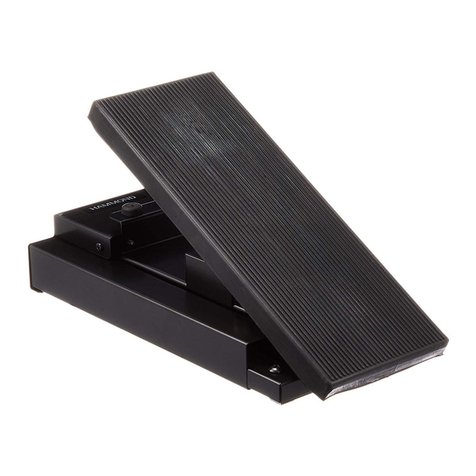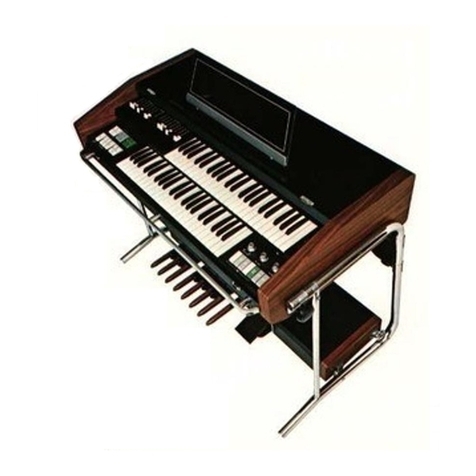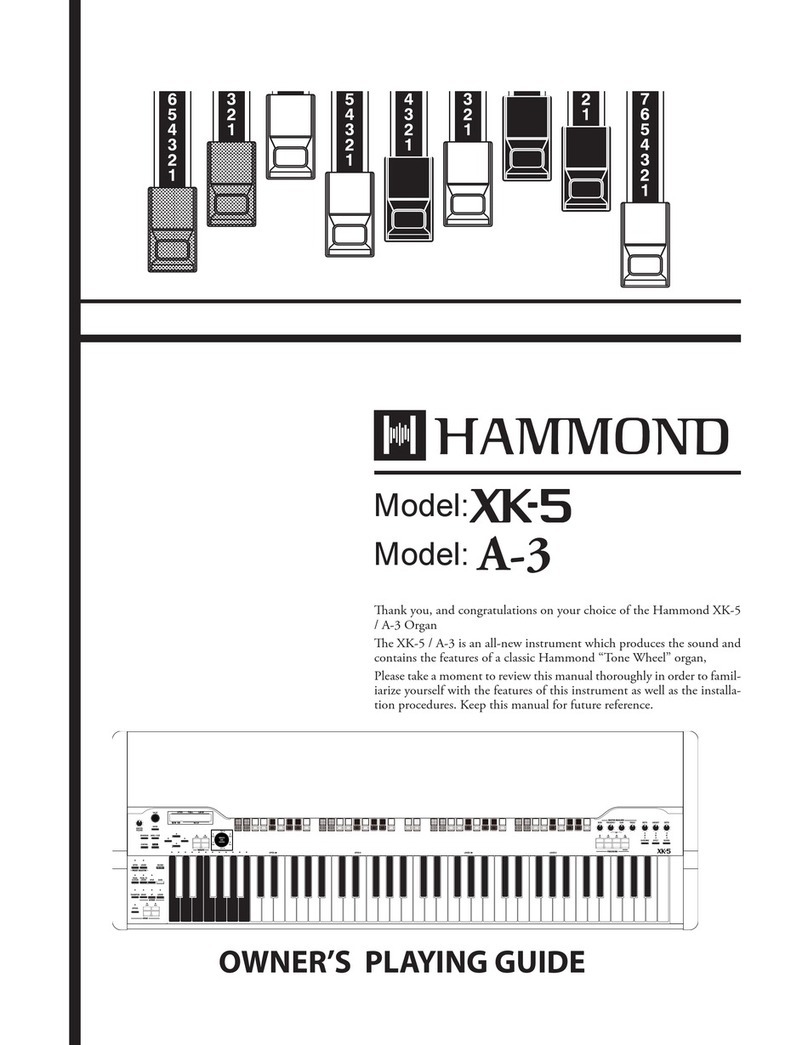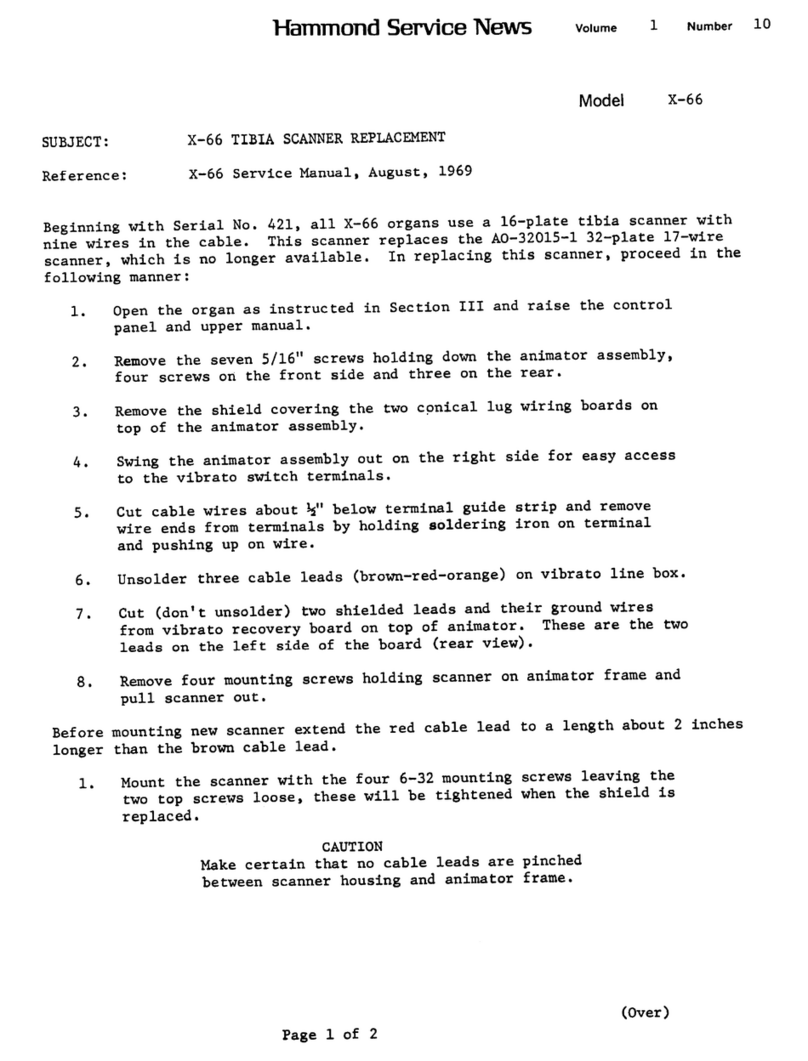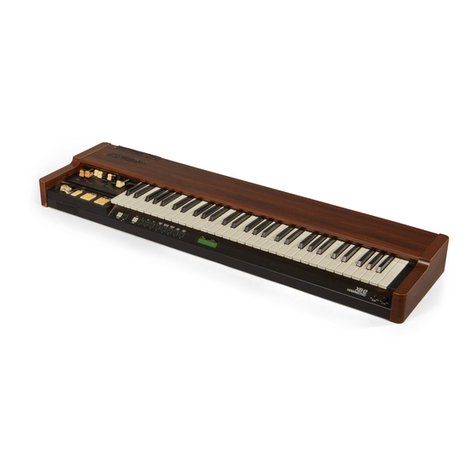
The output frequencies of the tone generator are numbered ,for convenience, in
order of increasing frequency. The lowest, number 1,is about 32 cycles per
second, and the highest, number 91, is about 6000 cycles per second. Frequency
numbers 1to 12 (1 to 13 on M-lOO) are used for pedals; numbers 13 to 17 (14 to
17 on M-lOO) are omitted; and numbers 18 to 91 are used for the manuals.
In case any generator frequency is weak or absent, refer to "Practical Service
Suggestions" for the procedure to be used in locating and correcting the trouble.
The output terminals of the generator consist of solder lugs mounted on the fil-
ter transformers, to which the manual cable and pedals are connected* The fre-
quency numbers of all terminals are indicated in Figures 14, 15, 16 and 17.
MANUALS
Musical frequencies from the tone generator go through the manual cable to term-
inal strips on the two manuals and from them to the key contact springs-
Each of the two manuals has forty-four (44) playing keys, or approximately
3-1/2 octaves. The two manuals do not cover exactly the same pitch range, but
they are arranged so that keys of like pitch are in line. Middle "C" is the first
Con the upper manual and the key in line with it on the lower manual.
Under each key are anumber of contact springs (for the fundamental and har-
monics of that key) which touch an equal number of busbars when the key is press-
ed, (Some keys at the right end of each manual have fewer springs, as noted be-
low) -All contact springs and busbars have precious metal contact surfaces to
avoid corrosion, and the manuals are sealed to exclude dust so far as possible.
In case acontact becomes dirty in spite of these precautions, abusbar shifter
(shown in Figures 3, 5,7) is provided in each manual to slide the busbars end-
wise and thus provide afresh contact surface.
The busbar shifting mechanism is somewhat different on the M-lOO than on prior
models of the Hammond Orgam Models M, M-2 and M-3. Looking under the lower man-
ual on the left hand end, ablack wood end block will be observed. One half inch
from the front of this block is adrilled hole. Within this drilling is asmall
metal tongue with apunched hole. Using either long nose pliers or ahook, this
tongue can be moved in and out and it in turn moves the busbars. The upper man-
ual shifter is in a similar place, but requires removal of the generator dust
cover to gain access to it.
The key contacts are connected through resistance wires to the manual terminal
strips. The manual wiring chart Figure 18, shows how the contact of each key
are connected to the proper frequencies to supply the fundamental and harmonics
of that particular key. The blank spaces indicate that no key contact is used,
inasmuch as the highest harmonics of the highest keys are above the range of the
tone generator and are not required. Since the percussion control tubes in the
M-3 and M-lOO are keyed through the 6th harmonic busbar, the blank spaces in this
row have contacts connected to ground through resistance wires.
The busbars of each manual, each one carrying acertain harmonic, are wired to
the harmonic drawbars for that manual in the M, M-2, M-3 and through the "Draw-
bars" tab in the M-IOO-
8

